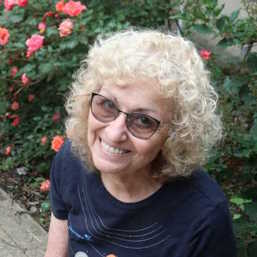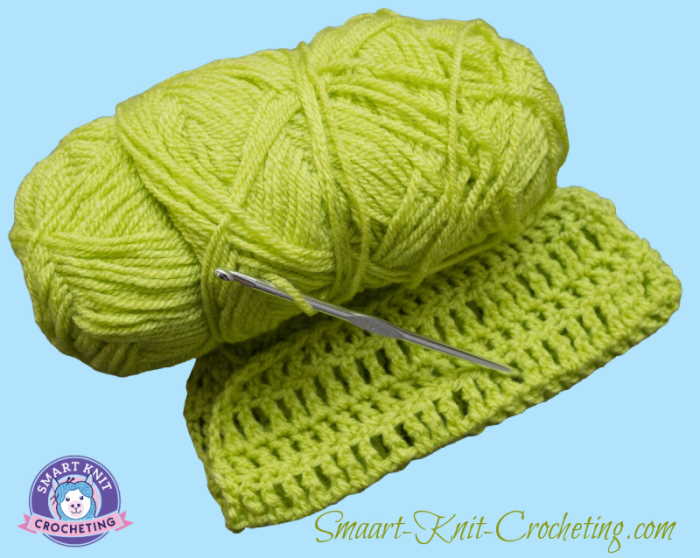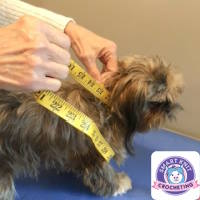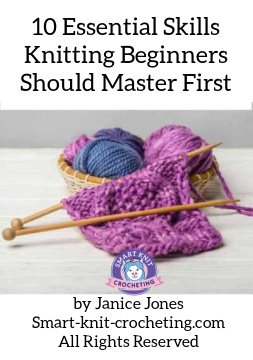- Home
- Knit and Purl Stitches
- Double Stockinette Stitch
Double Stockinette Stitch
Love the Stockinette Stitch, but hate the way it curls in all directions? You might love to learn how to make the double stockinette stitch, a slip stitch knit pattern that creates a thick fabric that looks the same on both the right and wrong sides.

This pattern should not be confused with double knitting, but it is an easy alternative for beginners who want a thick, reversible pattern that is worked in a one row repeat of knit and slip stitches. Perfect for those who hate to purl.
It is very thick which makes it perfect for items where you want more warmth such as cowls and scarves. It gets it's thickness because you are actually knitting a double layer.
You can see this if you remove the stitches from the needle and look inside.
 The double stockinette stitch pattern is a double layer of knit fabric.
The double stockinette stitch pattern is a double layer of knit fabric.How Does the Double Stockinette and the Traditional Stockinette Stitch Differ?
 Both swatches were worked on US No. 7 (4.5 mm) needles and worsted-weight yarn. Both were worked over a cast on of 26 stitches. Notice the difference in size.
Both swatches were worked on US No. 7 (4.5 mm) needles and worsted-weight yarn. Both were worked over a cast on of 26 stitches. Notice the difference in size.How are they the Same?
- Both stitches have the characteristic V-shaped stitches that line up in vertical columns.
- Both stitches create a fabric that is perfect for a wide variety of projects.
How are they Different?
- The traditional stockinette stitches naturally curl and are not reversible, while the double stockinette is reversible and does not curl.
- The double stockinette is thicker and squishy, whereas the traditional stockinette is not.
- The double stockinette stitch uses twice as much yarn as the traditional one.
- The gauge is very different. The swatches below were worked on 26 stitches and Needle sizes 7 (4.50 mm) needles.
Materials You’ll Need
- Yarn: Choose a medium-weight, smooth yarn to help see your stitches clearly.
- Needles: Use needles in a size appropriate for your yarn. Check the yarn label for recommendations.
- Scissors: For cutting your yarn.
- Tapestry needle: For weaving in ends.
- *If you want to try this swatch by making a washcloth, You will want to cast on at least 52 stitches on size 8 (5.0 mm) needles.
Skill Level
#2 Beginner
Skills needed
Abbreviations
CO = Cast On
K = knit
Sl1 purlwise=slip one stitch purlwise
Wyif=with yarn held in the front
 How to make a Slip one purlwise with yarn in front. (sl1 purlwise, wyif)
How to make a Slip one purlwise with yarn in front. (sl1 purlwise, wyif)Notes
- All instructions are written in US terms.
- The fabric is reversible and does not curl like normal stockinette fabric.
- This is a one-row repeat
- This stitch uses more yarn than many other stitch patterns.
Instructions
Cast on an even number of stitches
• Right side: *Knit 1, slip 1 purlwise with yarn in front*
• Wrong side: *Knit 1, sl1 purlwise wyif*
The best way to remember this pattern, without needing to read the instructions, is to knit the knit stitches and slip the ones that look like purl stitches. All stitches are slipped purlwise, meaning that you insert the right-hand needle into the next stitch as if to purl. Do not purl, but slip the stitch off the left and onto the right needle.
Repeat this pattern until you’ve reached the desired length.
Bind off in Pattern, which means you will bind off the stitches as if continuing the pattern, knitting the knits and slipping the purls. Weave in ends.
Can You Knit the Double Stockinette Stitch in the Round?
Absolutely. In the round, you will be working just slightly differently.
Round one is identical to that used when working flat, but round two is somewhat different.
You will want to use a stitch marker to indicate the beginning of the round. Here is how it is done on circular needles.
Abbreviations Used
Sl1P WYIB = Slip 1 Stitch Purlwise with Yarn held in the Back
Sl1P WYIF = Slip 1 Stitch Purlwise with Yarn held in the Front
* * = Repeat instructions the Asterisks
Cast on an even number of stitches.
Mark the beginning of the round with a stitch marker.
Round 1: * K1, Sl1 WYIF *
Round 2: * Sl1 WYIB, P1 *
Repeat rounds one and two until you reach your desired length, then bind off in pattern.
Tips and Tricks
- This is an easy pattern that typically works up nicely. Practicing with anything new is important, and please don’t get discouraged if you don’t achieve professional results immediately.
- With knitting, practice makes perfect, and it takes some time to build up muscle memory. Start with a swatch or small project before you tackle something larger.
Where can you use this stitch pattern?
- This stitch pattern creates a thick, dense, and squishy fabric that is very warm.
- Use it to make a scarf or cowl.
- Dish or face cloths worked in cotton yarn are an excellent first project for learning this stitch pattern.
- The double stockinette stitch also makes beautiful blankets, but since it uses so much yarn, any blanket project may be costly.
Frequently Asked Questions:
What is the Double Stockinette Stitch
What is the Double Stockinette Stitch
The Double Stockinette Stitch Pattern creates a stockinette stitch that is identical on the front and back of the fabric.
It is thick, dense, squishy, and does not curl like traditional stockinette stitch fabric.
It is a one-row repeat that uses knit stitches and slip stitches to achieve the look.
Does Double Stockinette Stitch Curl?
Does Double Stockinette Stitch Curl?
No, it lies flat even without the need to block.
Is the Double Stockinette Stitch Reversible?
Is the Double Stockinette Stitch Reversible?
Yes, it looks identical on both sides.
Conclusion
The double stockinette stitch is a rewarding technique that produces a beautiful, reversible fabric. This stitch will become a valuable addition to your knitting skill set with practice.
Enjoy the plush results of your work and explore the creative possibilities this stitch offers! Happy knitting!
Janice
About Janice
I've been kniting and crocheting since childhood, but never got serious until about 4 years ago. Taking classes, reading books, and most importantly, practicing, I've gained an understanding of how one might struggle when learning to knit or crochet.
Now, I'm on a mission to help others learn how to knit and crochet, and to love these needlearts as much as I do. More about Janice.








